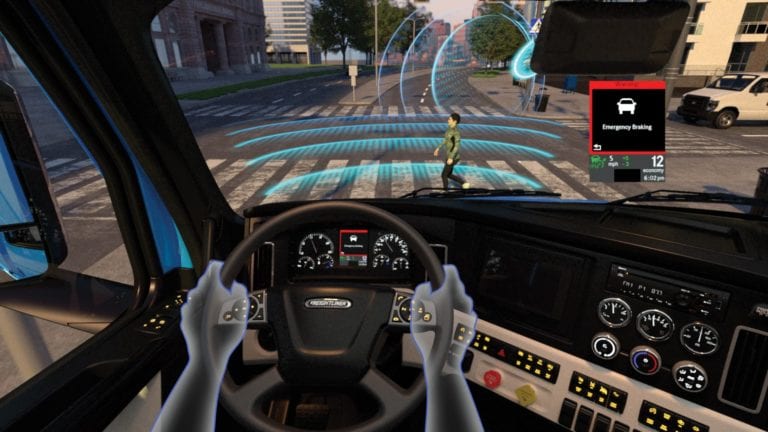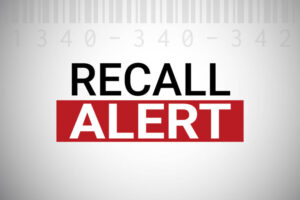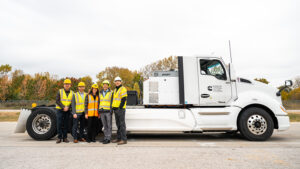PORTLAND, Ore. — Production of the Freightliner Cascadia with enhanced safety and aerodynamic solutions has begun.
A Daimler Trucks North America official said the new truck provides customers with a vehicle that is safer, more fuel efficient and offers a better driver experience than ever before.
Kelly Gedert, director of product marketing for Freightliner Trucks and Detroit Components, said Detroit Assurance 5.0 is now standard with Freightliner Cascadias powered by Detroit engines.
He said this proprietary radar and camera fused system features standard active safety and advanced driver assistance technologies designed to keep drivers, other motorists and pedestrians safe, including:
- Adaptive Cruise Control to 0 MPH: Automatically decelerates and accelerates to maintain a safe following distance. In stop-and-go-traffic, if the vehicle in front stops, the truck will also come to a stop and hold indefinitely. If the vehicle ahead moves in less than two seconds, the truck will resume moving at a safe following distance.
- Active Brake Assist 5.0 – Full Braking on Moving Pedestrian: When a moving pedestrian enters the truck’s path, Detroit Assurance 5.0 applies input from the radar and camera sensors to warn the driver using visual and audible warnings simultaneously with partial emergency braking. If the driver doesn’t act, full emergency braking brings the truck to a complete stop.
Additionally, new standard features with Detroit Assurance 5.0 include automatic wipers/headlamps, Intelligent High Beam, and traffic sign display.
Gedert said Side Guard Assist is an optional feature available with Detroit Assurance 5.0 that detects objects, including pedestrians and cyclists, in the passenger-side blind spot along the full length of the tractor and trailer.
“Helping keep motorists and pedestrians safe is our top priority, and the advanced technologies and groundbreaking innovations of Detroit Assurance 5.0 can help mitigate collisions and reduce unplanned expenses and downtime for our customers,” Gedert said. “Detroit Assurance 5.0 illustrates our commitment to increasing safety for everyone on the road.”
Active Lane Assist, an optional feature available in early 2020, consists of Lane Departure Protection and Lane Keep Assist. With Lane Departure Protection, if the truck begins to drift from its lane without the turn signal activated, a rumble sound, along with a visual warning, will alert the driver. The system will then counter steer the truck back into its lane. When Adaptive Cruise Control is enabled, Lane Keep Assist uses micro-steering movements to keep the new Cascadia centered in its detected lane. With the addition of lateral steering assist offered by the optional Active Lane Assist feature, in combination with Adaptive Cruise Control, Freightliner and Detroit will begin delivering the first production SAE Level 2 automated truck in North America.
Gedert said enhancements to all three aerodynamic packages for the Cascadia further improve the Cascadia’s industry-leading fuel performance. The Standard package now includes A-pillar deflectors, tow hook covers and side extender seals. The Aero package adds enhanced chassis fairing skirts and the AeroX package features an optimized low ground clearance bumper, optimized roof deflector, optimized drive wheel fairings and front wheel well closeouts.
Additional aerodynamic options available include the industry first Aerodynamic Height Control, which electronically lowers the suspension height one inch at 55 miles per hour to optimize airflow over and under the front of the truck and reduce drag. Michelin X Line D+ Energy tires, developed in collaboration with Michelin and exclusive to the Cascadia, are also available and reduce rolling resistance in 6×4 applications. All of the new aerodynamic features available on Cascadia provide up to a five percent increase in fuel efficiency over the current model.
“Our new aerodynamic options demonstrate our dedication to helping our customers achieve the best possible performance from their trucks,” Gedert said. “Freightliner continues to set the bar higher when it comes to designing features that provide better performance and enhanced efficiency.”
Critical to the Cascadia’s performance is the Integrated Detroit Powertrain. The powerful combination of either Detroit DD15 or DD13 engines, the Detroit DT12 automated manual transmission, and Detroit axles seamlessly works together to maximize performance.
A key update for the Cascadia from Detroit is Intelligent Powertrain Management 6 (IPM6), which comes standard with the DT12. Like earlier IPM technology, IPM6 integrates pre-loaded terrain maps and GPS into engine and transmission functions to know the route ahead and uses the truck’s kinetic energy to automatically adjust to its surroundings by reducing braking power and making transmission and engine adjustments. With the introduction of IPM6, map coverage of existing major highways and interstates has increased by 35%.
Gedert said another benefit of the powerful combination of Cascadia and Detroit designed to improve uptime is the Cascadia Maintenance System. This onboard monitoring system computes optimal maintenance intervals based on actual operating conditions of the vehicle. The system utilizes oil temperature data and other inputs to more accurately determine oil change intervals, and it improves additional service recommendations based on engine and transmission load data.
The Trucker News Staff produces engaging content for not only TheTrucker.com, but also The Trucker Newspaper, which has been serving the trucking industry for more than 30 years. With a focus on drivers, the Trucker News Staff aims to provide relevant, objective content pertaining to the trucking segment of the transportation industry. The Trucker News Staff is based in Little Rock, Arkansas.















I just had a 2020 Cascadia automatic. I cane out of driving freightliners standards. I would and will never have another automatic. It was the wiorse choice i could of made. It took my ability to react to the reckless drivers around me. Every time a car pass me it would do a yellow critical and everytime i was to exit and go to a truck stop with where i had to go under the overpass i had a red event . When i had to move the trailer tandems i would loose air to the point i would back up the line behind me waiting for the truck to go. It had no air dumps so if the trailer was low i could lower the truck to get under the trailer i had to go out and crank the handle till the trailer was high enough to get under. I am a female and the only thing good about this truck was it had a apu and plugs inside .
I drive a 2020 Cascadia and let me say they aren’t that great, the automatic breaking is flawed, I can’t tell you how many times it starts breaking for no reason, sometimes when I’m at highway speeds and that’s frightening. The lane departure warning is also very flawed, there is a lot of road construction going on everywhere and it detects old lines and sometimes patched asphalt and starts that annoying rumble, yes I have the ability to temporarily disable it but that only last a short time and it starts up again. The adaptive cruise control is a great feature until you want to pass the truck in front of you on a two lane highwat, it starts slowing you down way to early, then the warning beeps start when you hold the throttle down to get close enough to the truck to make the pass.. my truck is governed at 65, let’s say the truck on the highway in front of me is going 63 or 64, I need to make that pass and getting over 500 yards behind that truck will only piss off other vehicles. There needs to be a pass feature where with driver input the computer understands what’s happening and the warning beeps stop while the pass happens. The most frustrating thing about that truck is all the noises it makes. I understand their purposes but for us professional truck drivers who have been accident free for years and years these trucks are a nuisance, they are designed for drivers with ADD or millennials.
The first time the trucks brakes from 70 mph to 62 in about 2 seconds because it “thinks” you’re going to hit the black mailbox that’s in a little curve in the road and sends you jolting towards the front window, you realize this “system” just isn’t quite ready for prime time yet. Thank goodness no one has yet been in back of me when it does it’s little dance. Sure way to get hit in the back end….
Ya know!! I thought it was just me. As I have experienced the same type of incidents. Not to include the collision warning going off when I approach some overpasses. I’d have to agree that there needs to be some more adjustments to this “fail safe system”.